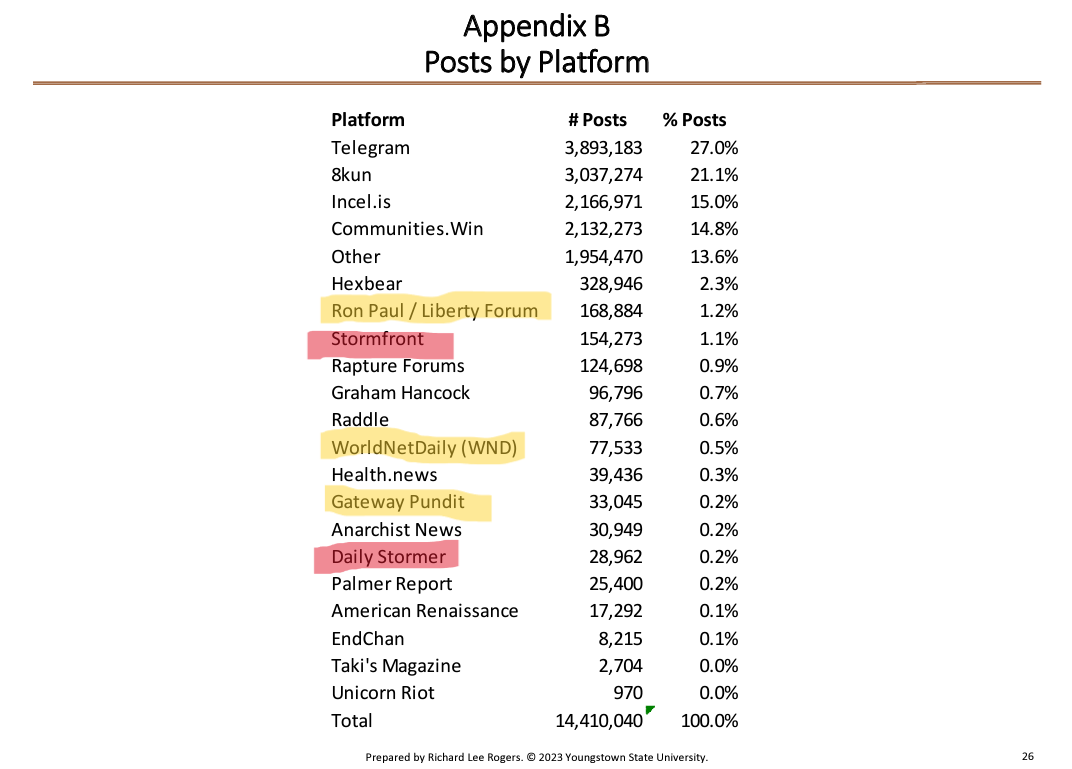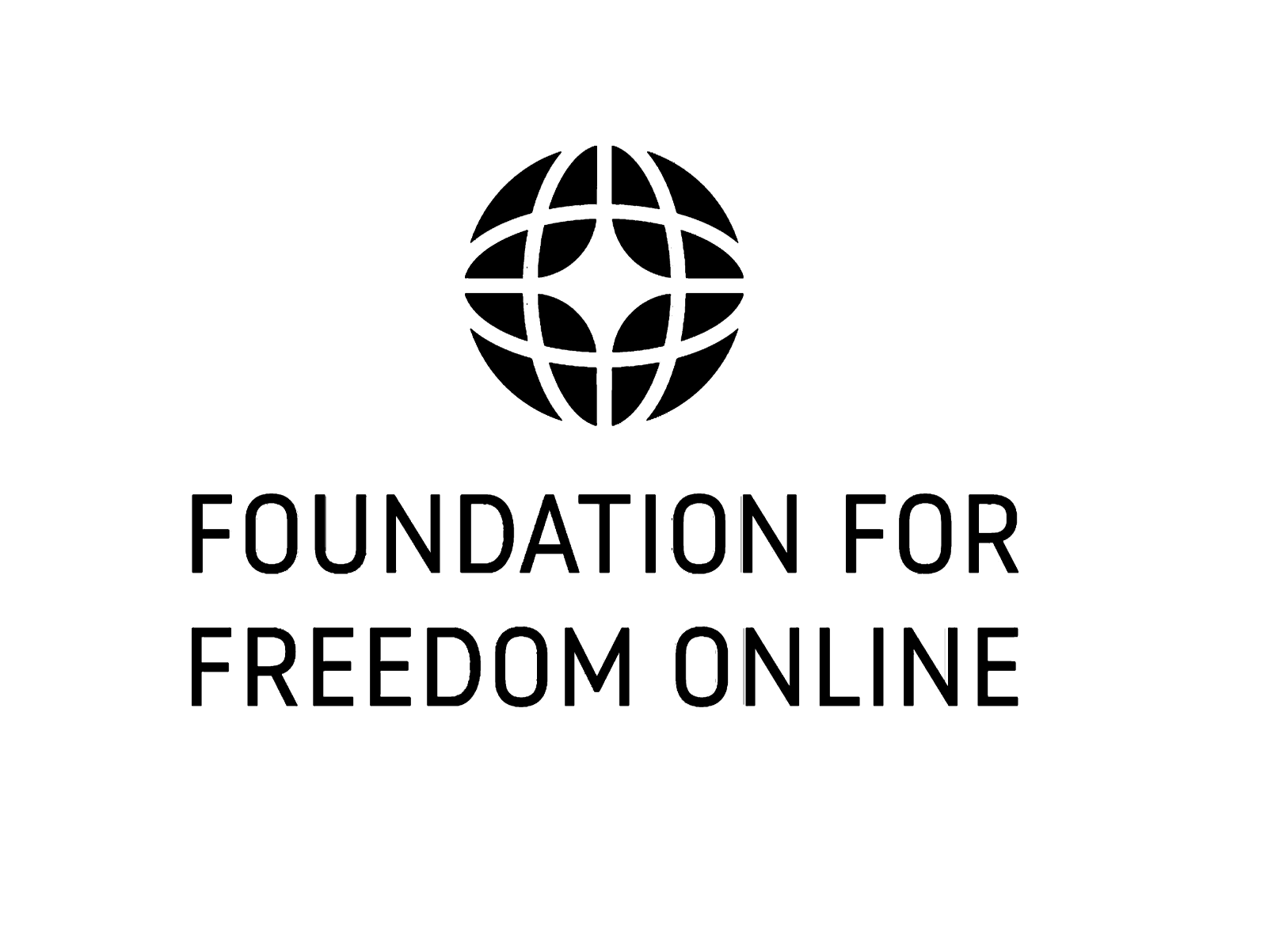A research project at Youngstown State University in Ohio, funded by a Department of Justice grants program, is scooping up millions of posts from Americans, storing them in a vast database, and analyzing them to identify common patterns of speech that can then be targeted for censorship. Targeted groups include conservative website The Gateway Pundit, a discussion board run by supporters of former Republican presidential candidate Ron Paul, and a wide range of communities on Telegram and Reddit.
The project, called “A Frame Analysis of Violence and Accelerationism in Cognitive Radicalization,” received over $440,000 in taxpayer funding from the DOJ for research that will incorporate an existing data project led by Youngstown State University professor Richard Lee Rogers, “Frames of Misinformation, Extremism, and Conspiracism” (FOMEC).
Contributors to the big-data focused project admit to collecting tens of millions of posts from Americans, which they group under a wide range of broad-brush labels including the “Christian Radical Right,” “QAnon,” “accelerationism,” and “extremism.”
From “The Christian Radical Right and Potentially Violent Discourse“:
This is a “big data” project. Over 55 million posts in total were collected for a period stretching from April 1, 2018, to February 28, 2022. The analysis itself was limited to 8 million posts with at least 50 words in order to make sure there were enough words in the post to identify key themes. Although some researchers argue for using 100 words as the threshold for inclusion (e.g., Boyd et al., 2022), I chose a lower cut point because over 96% of posts above 50 words were tagged at least once in the most recent quality audit (December 2021).
From “Social-media conspiracies and perceptions of sex crime: The mainstreaming of QAnon“:
Started February 2021. Recovered 92 million posts and 14 million posts with at least 50 words dating back to April 2018.
This means that the political opinions of tens of millions of Americans are sitting in a database and labeled as potential “domestic extremism” by a program backed by the DOJ, and paid for with taxpayer dollars. So far, the project has received $449,897 in DOJ Funding, part of a wider DOJ grants program on “Domestic Radicalization and Violent Extremism” that has paid out nearly $1.5 million in grants to the censorship industry.
Although Youngstown claims their research is focused on “extremists,” the project’s own publications show it is lumping mainstream conservatives in with open neo-Nazis. For example, the project’s most recent monthly report shows that a Ron Paul discussion board, as well as conservative news sites World Net Daily and the Gateway Pundit, are being monitored alongside neo-Nazi websites Stormfront and the Daily Stormer.

The Trump movement and religious groups are also targeted. One of the papers listed under the FOMEC project titled “COVID-19 Information Sources and Misinformation by Faith Community,” authored by Rogers himself, accuses Donald Trump of amplifying misinformation about COVID-19 and identified faith communities, especially White evangelicals, White nonevangelical Protestants and non-Hispanic Roman Catholics for spreading misinformation that originated with Trump. The DOJ funding a project that targets religious groups may pose problems for the agency, given that the DOJ’s FBI was recently exposed for targeting Catholics.
A Manner of Speaking
In its announcement of the grant to Youngstown, the DOJ’s notes the project’s emphasis on analyzing the “syntactical structure” of online speech:
The purpose of this study is to engage in a frame analysis of contemporary discourse associated with domestic radicalization. The results are then used to launch discussions with professionals outside of law-enforcement and security-related occupations about possible responses to online radicalization threatening their areas. The project has five goals: (1) to quantify the presence, syntactical structure, and sentiment of violent and accelerationist ideas;
“Syntactical structure” means the patterns of words, phrases, and clauses used by the groups under surveillance. The researchers are hoping to identify large swathes of Americans engaging in political speech by isolating their unique use of language. Other identified, these “syntactical structures” can easily be inputted into censorship algorithms, to monitor and suppress wide numbers of users based on their manner of speaking.
An early example of this censorship technique was exposed by investigative journalist James O’Keefe and Project Veritas in 2017. Using hidden cameras, O’Keefe’s journalists caught Twitter 1.0 software engineers admitting to technology that could “ban a way of talking.”
This preoccupation with identifying and categorizing trends in the use of language can be seen in the methodology used by Youngstown researchers:
The frame analysis relied on text mining, also known as automated text analysis (Berry & Kogan, 2010; Mehl & Gill, 2010). The analysis entailed the computerized creation of binarized ngrams highlighting themes built around selected key words, phrases, or word stems. (This thematic approach to ngrams was different from the more customary approach using lemmatized words, but the thematic approach was more workable given the volume of data involved.) The ngrams were initially based on words and word combinations known to the researcher or obtained through external sources, and then ongoing quality controls were used to improve the analysis through reviews of random samples of texts, verification of the accuracy of coding, and the auditing of texts with no or unusually small numbers of tags. (After the initial seeding, the development of themes generally follows the recursive approach used in grounded theory.)
The researchers admit that attempting to analyze and label the speech of millions of Americans can run into problems, because simply counting the number of times words and phrases are used robs them of context:
Conceptually, the analysis can also be referred to as a frame analysis with ngrams added together to build higher order frames and metaframes. This methodology is admittedly fuzzy because it is hard to distinguish between different ways in which words might be used, but it can be highly successful in identifying trends and patterns over time through the identification of clusters of ngrams. The text mining is done using Stata 17.0. Because of the large number of words, phrases, and word stems used to define frames and themes used in this analysis, the code.
The DOJ notes further that the Youngstown project will “assess the influence of historic texts” in the promotion of “violent extremism,” as well as the “mainstreaming” of extremist ideology:
(2) to establish associations between violent and accelerationist ideas with other thematic frames; (3) to assess the influence of historic texts in the promotion of historic texts in the promotion of contemporary violent extremism and accelerationism; (4) to identify patterns and strategies related to the cross-platforming, intergroup convergence, and mainstreaming of extremist language and ideologies; and (5) to launch multidisciplinary discussions of the everyday impact of violent and accelerationist discourse in three topic areas – public health, criminal victimization, and educational leadership.
As FFO’s Oscar Buynevich recently noted, the DOJ’s FBI was recently exposed for associating historical American symbols with extremist movements:
This new historical focus of the misinformation research at Youngstown is being propelled with taxpayer dollars by the very same DOJ that was exposed by an FBI whistleblower in 2022 for labeling historical quotes and symbolism as “domestic terrorism symbols.” The document of intense public scrutiny, the FBI’s Domestic Terrorism Symbols Guide for Militia Violent Extremism (MVE), specifically labels historic icons of patriotism including the Gadsden Flag, the Betsy Ross Flag, and any Revolutionary War Imagery as symbols of domestic terrorists.
The FBI guide labeled common American historical symbols, including the Gadsden Flag and the Betsy Ross Flag, as potential signs of extremism.

Youngstown’s analysis of the “mainstreaming” of extremist ideologies also raises interesting questions: once an allegedly fringe or extremist ideology becomes mainstream, is it no longer fringe or extremist? Once the “extremist” qualifier is gone, wouldn’t the DOJ-funded Youngstown researchers simply be involved in censoring a mainstream ideology? And isn’t the progression of ideas from the fringe to the mainstream liberal democracy working as intended?
In any case, the fact that the Youngstown researchers are monitoring mainstream populist and libertarian websites like World Net Daily and a Ron Paul forum suggests that they are casting their net far beyond genuine extremists.





